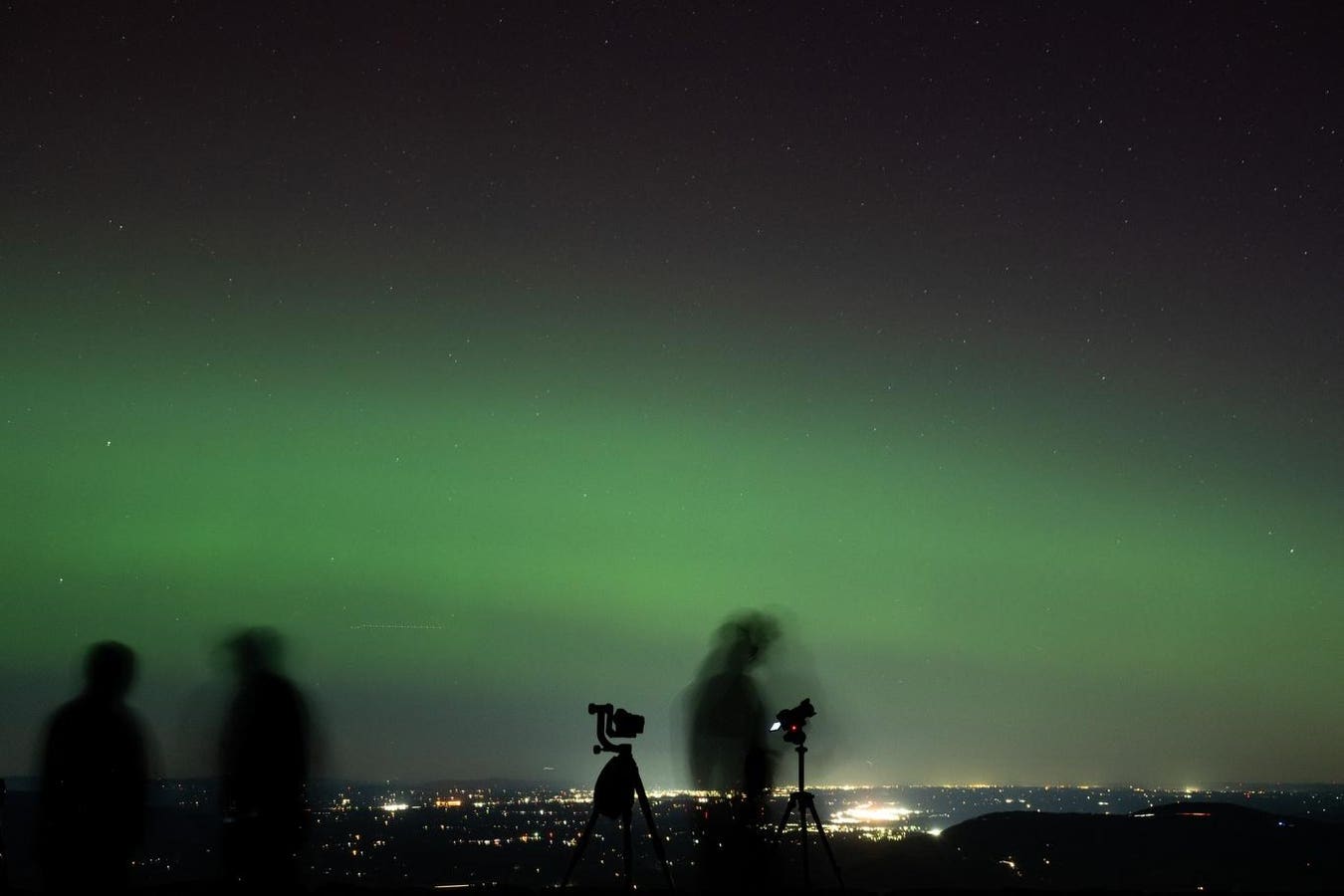Topline
A group of northern U.S. states have a chance to see the northern lights Friday, according to data from the National Oceanic and Atmospheric Administration, which expects a quiet aurora showing to end the week.
Chances of seeing the northern lights will decrease by Saturday. (Photo by SAUL LOEB/AFP via Getty … More
Key Facts
A Kp index of three was issued by NOAA for Friday night, indicating a “quiet aurora” that “can be quite pleasing to look at” for those in areas with good viewing conditions.
Friday’s viewing line stretches as far south as the border between North Dakota and South Dakota, with chances of seeing aurora borealis increasing the farther north people are of the line.
Auroral activity is forecast to dissipate greatly by Saturday, with the viewing line moving just north of the U.S.
Get Forbes Breaking News Text Alerts: We’re launching text message alerts so you’ll always know the biggest stories shaping the day’s headlines. Text “Alerts” to (201) 335-0739 or sign up here.
Where Will The Northern Lights Be Visible?
The viewing line encompasses states and areas such as Alaska, northeastern Washington, northern Idaho, northeastern Montana, North Dakota and the Michigan Peninsula.
Friday’s viewing line.
What’s The Best Way To See The Northern Lights?
Those looking to catch a glimpse of aurora borealis should do so between 10 p.m. and 2 a.m., the window of time generally considered to provide viewers with the right lighting conditions. Observers can increase their chances by going to vantage points and areas with clear skies and little to no light pollution.
What’s The Best Way To Photograph The Northern Lights?
Night mode and no flash is the best way for smartphone users to snap pictures of the northern lights. Those with traditional cameras should use low apertures, wide-angle lenses and tripods if possible.
Key Background
The northern lights have remained particularly active in the U.S. since last year and are expected to continue having a presence into 2026. The sun reached the peak of its 11-year cycle last year, representing an increase in solar flares and coronal mass ejections that contribute to frequent and stronger aurora borealis showings. The solar cycle will eventually taper off, leading to weaker auroral activity within the next two years.
Further Reading
Northern Lights Displays Hit A 500-Year Peak In 2024—Here’s Where You Could Catch Aurora Borealis In 2025 (Forbes)
